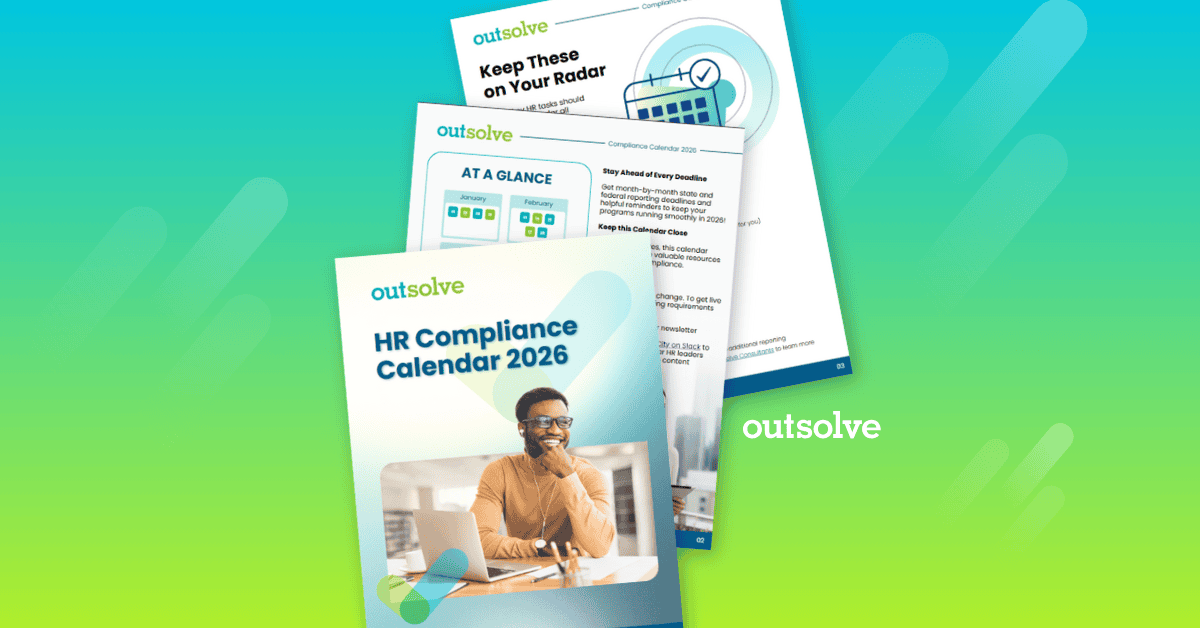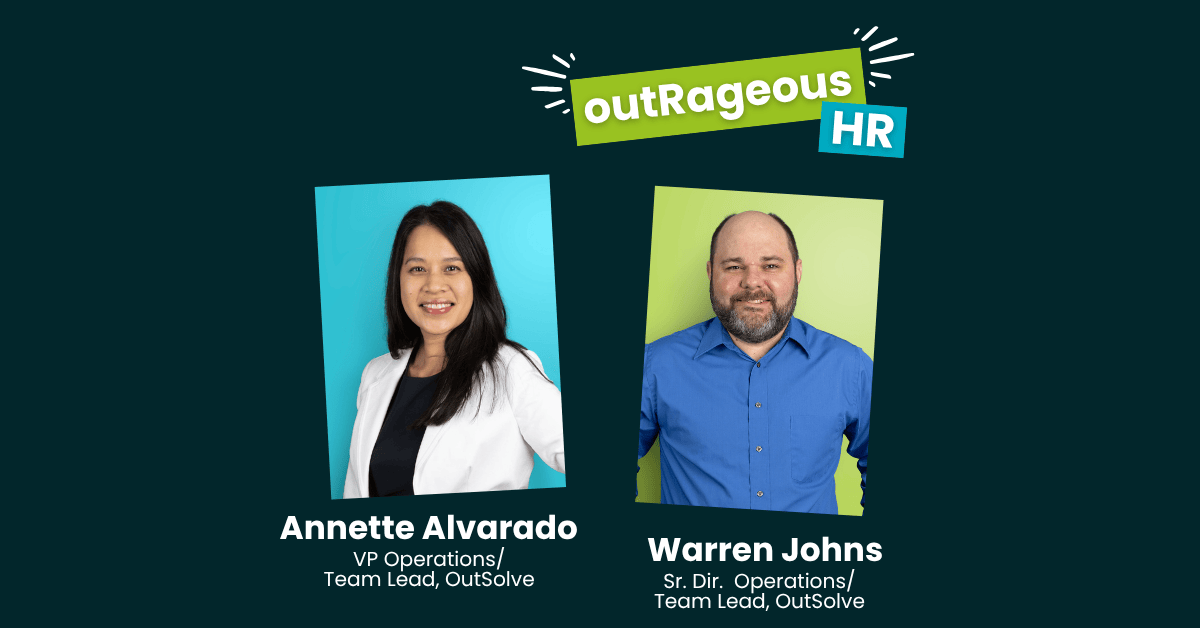4 min read
How to Conduct a Pay Equity Audit Without Creating Legal Exposure
![]() OutSolve
:
Jun 16, 2025 3:39:00 PM
OutSolve
:
Jun 16, 2025 3:39:00 PM

This article is part of an ongoing legal series designed to provide insight and practical guidance on current and emerging workplace compliance issues. These insights shared by lawyers are based on their interpretation of existing regulations and proposed changes, and intended for informational purposes, not to be regarded as legal advice.
By law, employers cannot compensate employees who perform the same job differently based on characteristics like race or gender. Yet, pay inequity is still common. Like any problem, you can’t correct pay inequality until you see it clearly. That’s where a pay equity audit comes in. An audit compares pay across different groups who perform the same or similar job duties to determine where, if anywhere, you are falling short.
Why Complete a Pay Equity Audit?
In short, employers should complete pay equity audits to ensure legal pay equity compliance. Audits offer other benefits, too, like attracting a diverse and talented workforce, the ability to get ahead of issues, and peace of mind that comes with taking steps to address long standing discrimination issues.
Yet, the law grants employees certain rights that, combined with employers’ obligations to prevent and address discrimination, can make employers worry that an audit will fuel lawsuits. However, employers with a long-term mindset know better. Not performing an audit risks a lawsuit that blindsides you.
Employee Rights
The Equal Pay Act (EPA) applies to sex-based pay disparities, but several laws establish that employers also cannot pay employees differing amounts based on the employee’s:
- Race,
- Color,
- Religion,
- National origin,
- Disability, or
- Age.
A claim under the EPA requires the employee to show differing compensation for “substantially equal” work. Although other laws, like Title VII and the Americans with Disabilities Act (ADA), don’t have the same requirement, employees claiming pay disparity need comparisons to make their case. Questions about the similarity between jobs are often the core of pay inequality claims.
When employers discriminate, employees may recover damages, such as the difference between the pay they received and the pay they should have received.
Employer Obligations
Employers have certain proactive obligations to prevent discrimination. Employers must:
- Ensure that supervisors and those making human resources decisions don’t discriminate;
- Prevent hostile work environments, even those created by customers or non-supervisory employees; and
- Respond promptly and effectively to complaints of discrimination.
Employers who meet their obligations, acting reasonably and proactively, may have one or more defenses to a discrimination lawsuit. Completing an internal audit indicates an employer is attempting to reduce or eliminate bias, so long as the employer acts to correct issues the audit reveals.
Planning an Internal Pay Equity Audit
The first step in an internal pay equity audit is to plan it. That means deciding how you’ll complete the audit, particularly in terms of the process and what you’ll be comparing.
Audit Process
To plan the audit process, you must decide:
- Who will perform the audit,
- What you’ll tell employees and when,
- When you’ll complete the audit, and
- Whether you’ll audit all employees or only certain groups.
You may hire outside auditors or run the audit entirely in-house. In either case, consult an attorney to ensure you know your specific rights and responsibilities.
Comparing Like Employees
You cannot treat those with relatively equal skills or abilities that make someone “good” at their job differently based on protected characteristics. But determining whether you are treating like-employees differently can be challenging. There’s always some way to distinguish between two individuals. Your audit needs a bird’s-eye view.
To gain this perspective, identify:
- The jobs your employees do,
- The specific duties each job entails,
- What success looks like in that role, and
- How success is measured.
You should also identify other important considerations when determining pay, like seniority or performance evaluations.
Implementing a Pay Equity Audit
To complete your pay equity audit:
- Compile a list of employees and their wages, salaries, bonuses, and other compensation like restricted stock;
- Be sure to note benefits and other perks, such as better offices or parking spaces;
- Group employees by duties;
- Identify which, if any, protected characteristics each employee has; and
- Compare compensation.
Your auditor should create a written pay equity analysis explaining their conclusions.
Responding to Pay Equity Analysis
After you receive a pay equity analysis, discuss the results and what you can, should, or must do about them with business partners and your attorney. If the analysis indicates unequal pay, move to correct the issues promptly and deliberately. For example, offer raises to relatively undercompensated employees.
Deciding what to communicate to your employees and how is essential during this process. Transparency is key, but you don’t have to reveal every single detail. Rely on your lawyer’s advice to stay on the right side of disclosure.
Once you’ve righted existing wrongs, search for the source: why you’re paying employees different amounts for the same work. Bias creeps in subtly, so a careful, honest review of potential biases is essential.
Explicit Bias
Even when employers have anti-discrimination policies, hiring managers can hold discriminatory views and act accordingly without making their true motivations obvious. Without vigilance, you might not notice patterns indicating discrimination.
Unconscious Bias
Unconscious or implicit bias can also lead to equal pay issues, but identifying sources of unconscious bias can be challenging. Orchestras offer an illustrative example of how you can root out the sources of bias.
To address historical sexism, orchestras hold blind auditions using a screen, where evaluators can only evaluate candidates based on what they can hear. By comparing outcomes for women who completed both blind and non-blind auditions, a study conducted in 2000 concluded that women fared better in the blind application process.
Yet, some sex-based disparities remained. In response, orchestras found a source of unconscious bias that telegraphed candidate gender: the sound of high heels on the stage floor. So, those orchestras started to provide carpets for candidates to walk on.
Some male candidates also fared better in blind auditions. Although the study didn’t identify why, one can imagine that something about their appearances, which the evaluators could no longer see, inspired unconscious bias, too. By implementing blind auditions, orchestras focus on ability rather than personal characteristics.
Ensuring Future Pay Equity Compliance
Regardless of the results of the audit, you can work to ensure future pay equity compliance by:
- Implementing a standardized compensation structure based on objective criteria,
- Communicating transparently about those criteria,
- Completing regularly scheduled audits, and
- Rooting out the sources of bias.
Evaluating and reevaluating how biases arise is essential, especially since elements of unconscious bias, like the click-clack of high heels, may take time to identify.
Outsolve Can Help
At Outsolve, we want to help you achieve pay equity. You can’t fix a problem if you don’t understand it. We offer solutions to help you identify and eliminate explicit and implicit biases that lead to pay inequality, enabling your business to provide merit-based compensation.
Outsolve offers tools to help employers complete and respond to pay equity audits and ensure compliance with state and federal anti-discrimination laws. Contact us to learn more about how we can help.
Founded in 1998, OutSolve has evolved into a premier compliance-driven HR advisory firm, leveraging deep expertise to simplify complex regulatory landscapes for businesses of all sizes. With a comprehensive suite of solutions encompassing HR compliance, workforce analytics, and risk mitigation consulting, OutSolve empowers organizations to navigate the intricate world of employment regulations with confidence.
Weekly OutLook
Featured Posts

New Year, New Deadlines: 2026 HR Compliance Calendar

outRageous HR: Plan Now or Pay Later
Related Posts

In-House or Outsourced I-9 Management: Which Is Best for Your Organization?
Every U.S. employer, regardless of size or industry, is required by law to confirm each new hire’s identity and verify that they are authorized to...

outRageous HR: Building a Compensation Strategy That Actually Works
If your compensation strategy is mostly “gut feeling” plus whatever you did last year… it’s time to rethink your approach.

HR Compliance Checklist: What Every HR Pro Needs to Know
During times of sweeping change to federal laws, and with new state laws being enacted, it's more important than ever for HR professionals to ensure...

